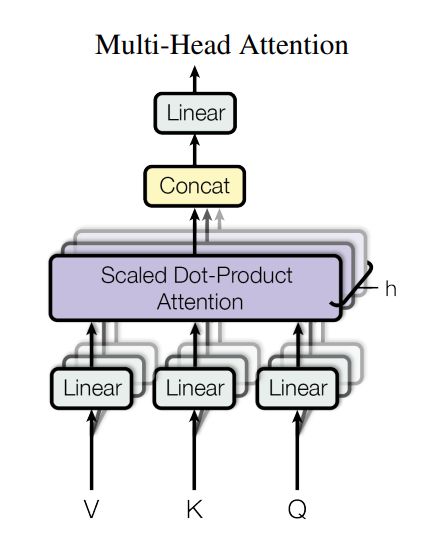注意力机制讲解与代码解析
一、SEBlock(通道注意力机制)
先在H*W维度进行压缩,全局平均池化将每个通道平均为一个值。
(B, C, H, W)---- (B, C, 1, 1)
利用各channel维度的相关性计算权重
(B, C, 1, 1) --- (B, C//K, 1, 1) --- (B, C, 1, 1) --- sigmoid
import torch
import torch.nn as nn
class SELayer(nn.Module):
def __init__(self, channel, reduction = 4):
super(SELayer, self).__init__()
self.avg_pool = nn.AdaptiveAvgPool2d(1) //自适应全局池化,只需要给出池化后特征图大小
self.fc1 = nn.Sequential(
nn.Conv2d(channel, channel//reduction, 1, bias = False),
nn.ReLu(implace = True),
nn.Conv2d(channel//reduction, channel, 1, bias = False),
nn.sigmoid()
)
def forward(self, x):
y = self.avg_pool(x)
y_out = self.fc1(y)
return x * y二、CBAM(通道注意力+空间注意力机制)
CBAM里面既有通道注意力机制,也有空间注意力机制。
通道注意力同SE的大致相同,但额外加入了全局最大池化与全局平均池化并行。
空间注意力机制:先在channel维度进行最大池化和均值池化,然后在channel维度合并,MLP进行特征交融。最终和原始特征相乘。 
import torch
import torch.nn as nn
class ChannelAttention(nn.Module):
def __init__(self, channel, rate = 4):
super(ChannelAttention, self).__init__()
self.avg_pool = nn.AdaptiveAvgPool2d(1)
self.max_pool = nn.AdaptiveMaxPool2d(1)
self.fc1 = nn.Sequential(
nn.Conv2d(channel, channel//rate, 1, bias = False)
nn.ReLu(implace = True)
nn.Conv2d(channel//rate, channel, 1, bias = False)
)
self.sig = nn.sigmoid()
def forward(self, x):
avg = sefl.avg_pool(x)
avg_feature = self.fc1(avg)
max = self.max_pool(x)
max_feature = self.fc1(max)
out = max_feature + avg_feature
out = self.sig(out)
return x * out
import torch
import torch.nn as nn
class SpatialAttention(nn.Module):
def __init__(self):
super(SpatialAttention, self).__init__()
//(B,C,H,W)---(B,1,H,W)---(B,2,H,W)---(B,1,H,W)
self.conv1 = nn.Conv2d(2, 1, kernel_size = 3, padding = 1, bias = False)
self.sigmoid = nn.sigmoid()
def forward(self, x):
mean_f = torch.mean(x, dim = 1, keepdim = True)
max_f = torch.max(x, dim = 1, keepdim = True)
cat = torch.cat([mean_f, max_f], dim = 1)
out = self.conv1(cat)
return x*self.sigmod(out)三、transformer里的注意力机制
Scaled Dot-Product Attention
该注意力机制的输入是QKV。
1.先Q,K相乘。
2.scale
3.softmax
4.求output
import torch
import torch.nn as nn
class ScaledDotProductAttention(nn.Module):
def __init__(self, scale):
super(ScaledDotProductAttention, self)
self.scale = scale
self.softmax = nn.softmax(dim = 2)
def forward(self, q, k, v):
u = torch.bmm(q, k.transpose(1, 2))
u = u / scale
attn = self.softmax(u)
output = torch.bmm(attn, v)
return output
scale = np.power(d_k, 0.5) //缩放系数为K维度的根号。
//Q (B, n_q, d_q) , K (B, n_k, d_k) V (B, n_v, d_v),Q与K的特征维度一定要一样。KV的个数一定要一样。MultiHeadAttention
将QKVchannel维度转换为n*C的形式,相当于分成n份,分别做注意力机制。
1.QKV单头变多头 channel ----- n * new_channel通过linear变换,然后把head和batch先合并
2.求单头注意力机制输出
3.维度拆分 将最终的head和channel合并。
4.linear得到最终输出维度
import torch
import torch.nn as nn
class MultiHeadAttention(nn.Module):
def __init__(self, n_head, d_k, d_k_, d_v, d_v_, d_o):
super(MultiHeadAttention, self)
self.n_head = n_head
self.d_k = d_k
self.d_v = d_v
self.fc_k = nn.Linear(d_k_, n_head * d_k)
self.fc_v = nn.Linear(d_v_, n_head * d_v)
self.fc_q = nn.Linear(d_k_, n_head * d_k)
self.attention = ScaledDotProductAttention(scale=np.power(d_k, 0.5))
self.fc_o = nn.Linear(n_head * d_v, d_0)
def forward(self, q, k, v):
batch, n_q, d_q_ = q.size()
batch, n_k, d_k_ = k.size()
batch, n_v, d_v_ = v.size()
q = self.fc_q(q)
k = self.fc_k(k)
v = self.fc_v(v)
q = q.view(batch, n_q, n_head, d_q).permute(2, 0, 1, 3).contiguous().view(-1, n_q, d_q)
k = k.view(batch, n_k, n_head, d_k).permute(2, 0, 1, 3).contiguous().view(-1, n_k, d_k)
v = v.view(batch, n_v, n_head, d_v).permute(2, 0, 1, 3).contiguous().view(-1. n_v, d_v)
output = self.attention(q, k, v)
output = output.view(n_head, batch, n_q, d_v).permute(1, 2, 0, 3).contiguous().view(batch, n_q, -1)
output = self.fc_0(output)
return output


